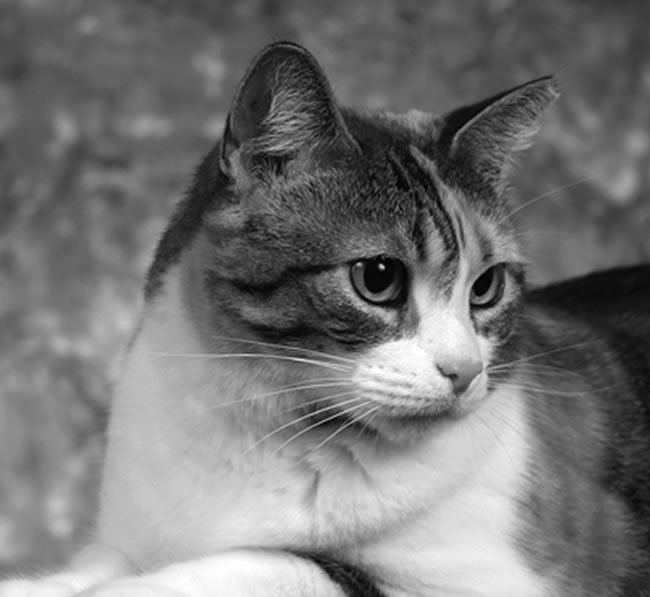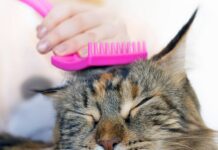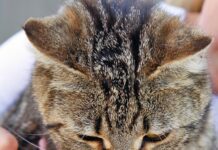Q. I have two cats, a 15-year-old, 6-pound domestic calico with mid-length hair and a 7-year-old, 8-pound part-Himalayan, also with mid-length hair. Both have developed matted hair on both sides of their hindquarters. I was able to shave the calicos off and the hair grew back OK. The big cat wont let me shave him. What causes these mats?

A. Thank you for writing about this common problem. It can not only be annoying but can also predispose to certain skin diseases that may, in some cases, be an indication that something is not right with a kitty. Perhaps a discussion of the normal anatomy and cycle of hair growth would be a good place to start.
Cats, like all mammals, have hair that grows from follicles found in the skin. Hair comes in different forms, including the undercoat, or down, which is the softer, fluffier layer that provides warmth, and the guard hairs, which are generally longer than the undercoat. The guard hairs usually determine the color of a cat and provide a barrier of protection from water, ultraviolet light and trauma. Whiskers are another type of long, thick hair that extends from the face and legs of a cat and provide tactile information about a cats environment, allowing him to gauge the size of openings, navigate in the dark and perhaps even smell things. (Thats cool!)
Cats normally shed their hair in the spring and early fall in temperate zones, although they may also shed in response to artificial changes in temperature and the amount of light. Some degree of shedding may be normal year-round. Cats are fastidious groomers, and this grooming helps keep the hairs healthy and removes hairs that are shed. While grooming, cats often ingest hair that is shed, sometimes predisposing them to hairballs, or trichobezoars, which may cause problems in some cats.
Mats usually form when shed hairs become tangled with non-shed hairs and dirt, environmental moisture, excessive oil from oil glands in the skin, and, in some cases, urine and/or feces. Sometimes the undercoat is involved, and mats may form in non-shed hairs. The formation of mats may indicate that a cat is not grooming well, either because of illness that may alter his behavior (lethargy/weakness) or because of restricted access to areas of the body, as may be seen with obese cats who cannot reach their hind ends. An unkempt appearance resulting from failure to groom is often an indication of a medical problem, and cats with this appearance should be seen by a veterinarian. Mats may predispose cats to skin infections and external parasites such as fleas, so they should be dealt with promptly when observed.
Mats can be prevented in most cats by regular brushing. Once formed, they may require significant work with a brush and/or fine comb to remove. Consultation with a veterinarian and/or groomer can be very helpful if mats are advanced, and they may need to be removed by shaving. Caution is advised if the latter is the case, as it is common for the skin to be damaged during this process, and this may predispose a kitty to skin infections. In rare, extremely advanced cases of matting, cats may need to be sedated or even anesthetized to remove mats safely and efficiently.
I hope that this is helpful, and that your kitties are doing well. If matting continues to be a problem, please consult with your veterinarian, who is always the best source of advice for issues regarding your kitties health. We cats always want to look our best, and mats can be both unsightly and an indication of a problem or a predisposing factor to problems that we all wish to avoid.
-Best regards, Elizabeth
Elizabeth is thankful for the assistance of Bruce G. Kornreich, DVM, Ph.D., ACVIM, Associate Director of the Cornell Feline Health Center, in providing the answer on this page.



